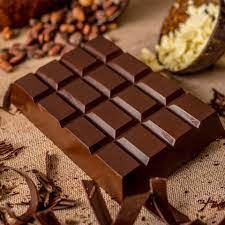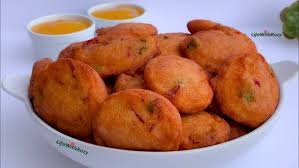Nutrition
Flavorsome soya chunks dry masala

Soya chunks
Soya chunks are also sometimes known as meal maker or nutri nuggets. Like TVP (textured vegetable protein), they are made from defatted soy flour, a byproduct after extracting soybean oil.
Hence, they are a great source of plant based protein, where a 50g serving provides more than 25g of protein and only about 170 calories. Their texture closely resembles that of meat, making them the perfect substitute for animal protein.
- Preparation:
- Soak soya chunks in hot water for around 10 minutes to rehydrate them. Make sure that sufficient hot water is used to fully cover them as they will expand upon soaking.
- Once your they have softened, drain and rinse with cold water. Using your hands, gentle squeeze out excess moisture.
- Place rehydrated chunks into a bowl and add in chili powder, garam masala and salt. Toss until everything is well incorporated. Set aside.
- Heat up a tablespoon or so of neutral oil in a non-stick pan or cast-iron skillet. Once pan is heated, add in onion and saute for 3-4 minutes until translucent. Next, add in garlic and saute for another minute.
- Now, add in tomato puree, water, garam masala, chili powder and coriander powder. Bring mixture to a boil, then lower heat to a gentle simmer. Let it simmer, covered for about 10 minutes.
- Lastly, toss in rehydrated chunks into the pan and stir to combine. Let it cook for several minutes, or until mixture appears dry. Your soya chunks masala is ready to be served!
Rice – This soya chunks masala is best paired with rice. You can simply do some basic steamed brown or white rice.
Source: https://www.myplantifulcooking.com/
Nutrition
Benefits of chocolate

Antioxidants
Dark chocolate contains several compounds that possesses antioxidant properties, such as flavanols and polyphenols. Antioxidants neutralise free radicals and prevent oxidative stress.
Oxidative stress refers to the damage that excessive amounts of free radicals can inflict on cells and tissues in the body.
Oxidative stress contributes to the natural aging process. Over time, the effects of oxidative stress may also contribute to the development of a variety of diseases.
Heart disease risk
Regularly eating dark chocolate helps reduce a person’s likelihood of developing heart disease. Some of the compounds in dark chocolate, specifically flavanols, affect two major risk factors for heart disease: high blood pressure and high cholesterol.
Blood pressure
The flavanols in dark chocolate stimulate nitric oxide production in the body. Nitric oxide causes blood vessels to dilate, or widen, which improves blood flow and lowers blood pressure.
Cholesterol
Dark chocolate also contains certain compounds, such as polyphenols and theobromine that may lower levels of low-density lipoprotein (LDL) cholesterol in the body and increase levels of high-density lipoprotein (HDL) cholesterol. Doctors often refer to LDL cholesterol as “bad cholesterol” and HDL cholesterol as “good cholesterol.
Anti-inflammatory effects
Inflammation is part of the body’s natural immune response to germs and other harmful substances. However, chronic inflammation can damage cells and tissues and may increase the risk of some health conditions, including type 2 diabetes, arthritis, and certain types of cancer.
Dark chocolate contains compounds with anti-inflammatory properties that may help reduce inflammation in the body.
Insulin resistance
Insulin resistance occurs when the body’s cells stop responding to the hormone insulin. Insulin resistance can cause abnormally high levels of blood glucose, which can lead to prediabetes and type 2 diabetes.
Brain function
Eating dark chocolate may improve brain function and help prevent neurodegenerative conditions, such as Alzheimer’s disease and Parkinson’s disease.
The findings of a small 2018 study Trusted Source suggest that the flavanols present in dark chocolate may enhance neuroplasticity, which is the brain’s ability to reorganise itself, particularly in response to injury and disease.
Nutrition
Koose (fried cowpea bean cake)

Ingredients
• 300 grams of cowpea (dehusked) flour
• 200 ml of oil (for deep frying)
• 20 grams of ginger
• 10 grams of fresh or dry hot pepper
• 50 grams of onion (optional)
• 2 tablespoonfuls of salt
• 1000 ml water
Preparation
-Wash, peel ginger, hot pepper, onion (Grind or blend)
-Mix water with cowpea flour and beat until mixture is fluffy
-Add ground spices (ginger, hot pepper and onion) and salt to cowpea flour in bits and continue to beat
-Add water and stir to mix evenly and to obtain a soft dropping consistency cooking
-Put oil on fire and add chopped onions
-Drop mixture by spoonfuls in the hot oil and fry, turning occasionally until golden brown (frying may take about three minutes)
– Take the cakes from hot oil, drain in a colander and place on kitchen paper to extract excess oil
• Serve hot with corn, millet or sorghum porridge or alone as a snack
By Linda Abrefi Wadie
-

 News1 week ago
News1 week agoAshanti Regional minister meets former ministers
-

 News1 week ago
News1 week agoDzifa Gomashie launches three-day consultative meeting of ECOWAS Member States on copyright under AfCFTA
-

 News1 week ago
News1 week agoAG’s Department advised Godfred Dame to drop charges against Dr. Johnson Asiama – Dominic Ayine reveals

